Abstract
The extent to which individuals receive necessary and timely care (timeliness) is one dimension of the process of care that has received little attention. Timeliness can be viewed as the interaction between patient care-seeking behavior and system accessibility,both of which are expected to influence the effectiveness of medical care. This study examines the provider's assessment of the timeliness of care received in the department of medicine of a prepaid program. Provider judgments are found to be significantly related to the provider's perception of problem severity and to the patient's prognosis. Anaylsis of patient-reported problem status one week later are also found to be related to the timeliness of care. Implications of timeliness assessments for monitoring and improving access and care-seeking behavior are discussed.
Full text
PDF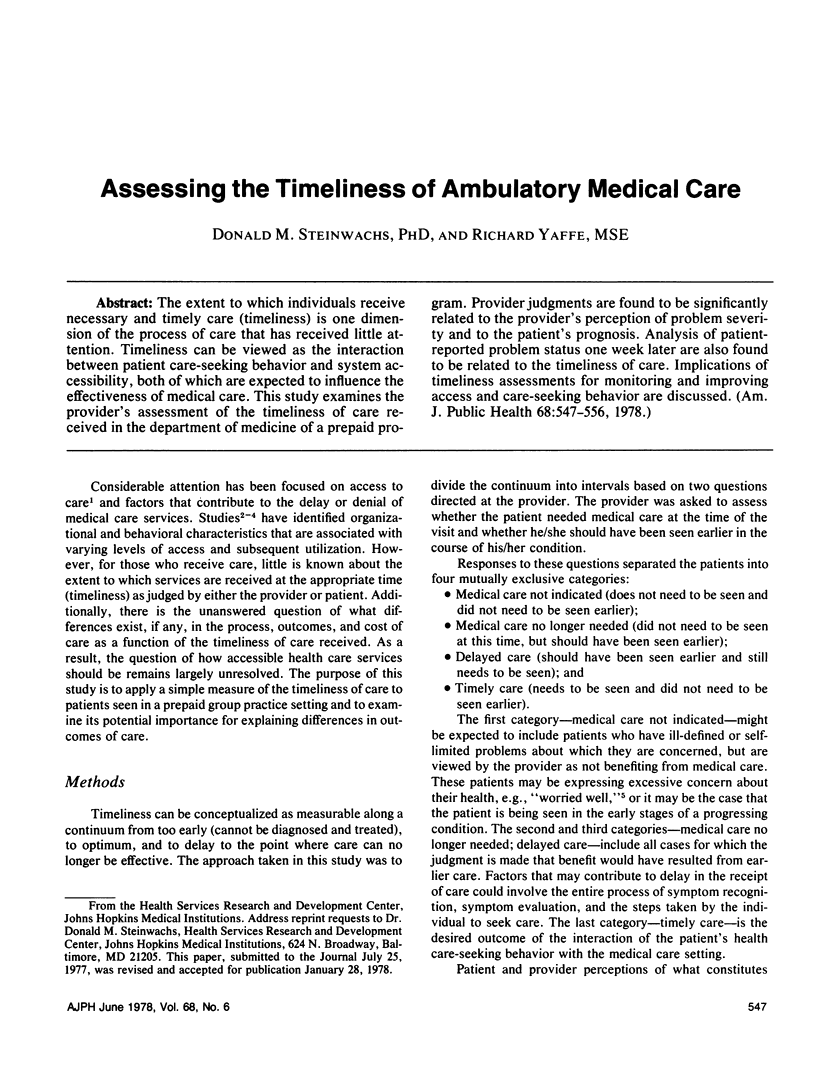
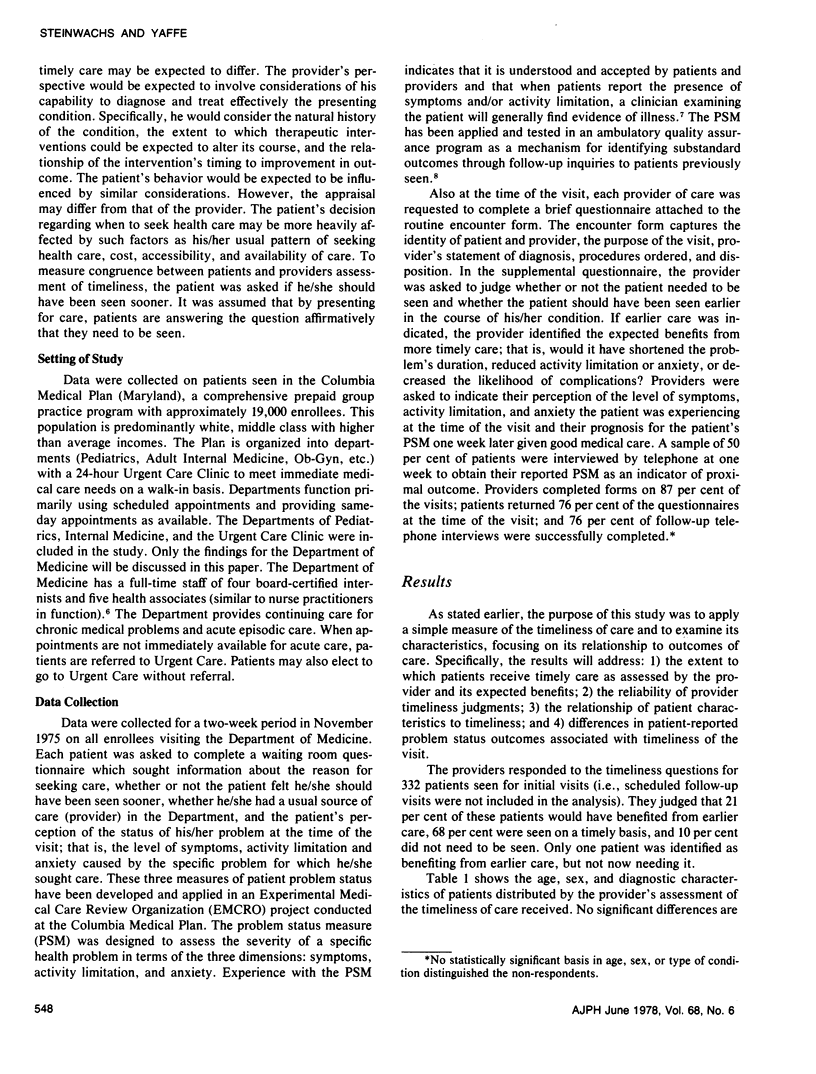
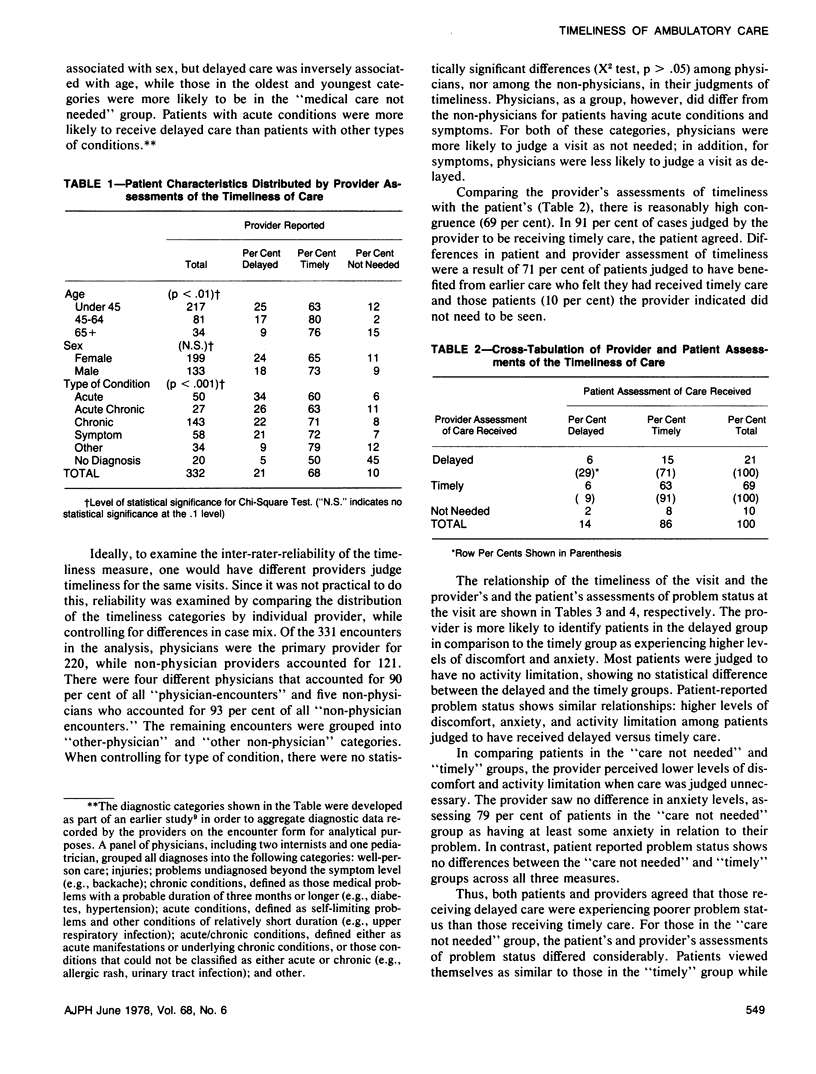
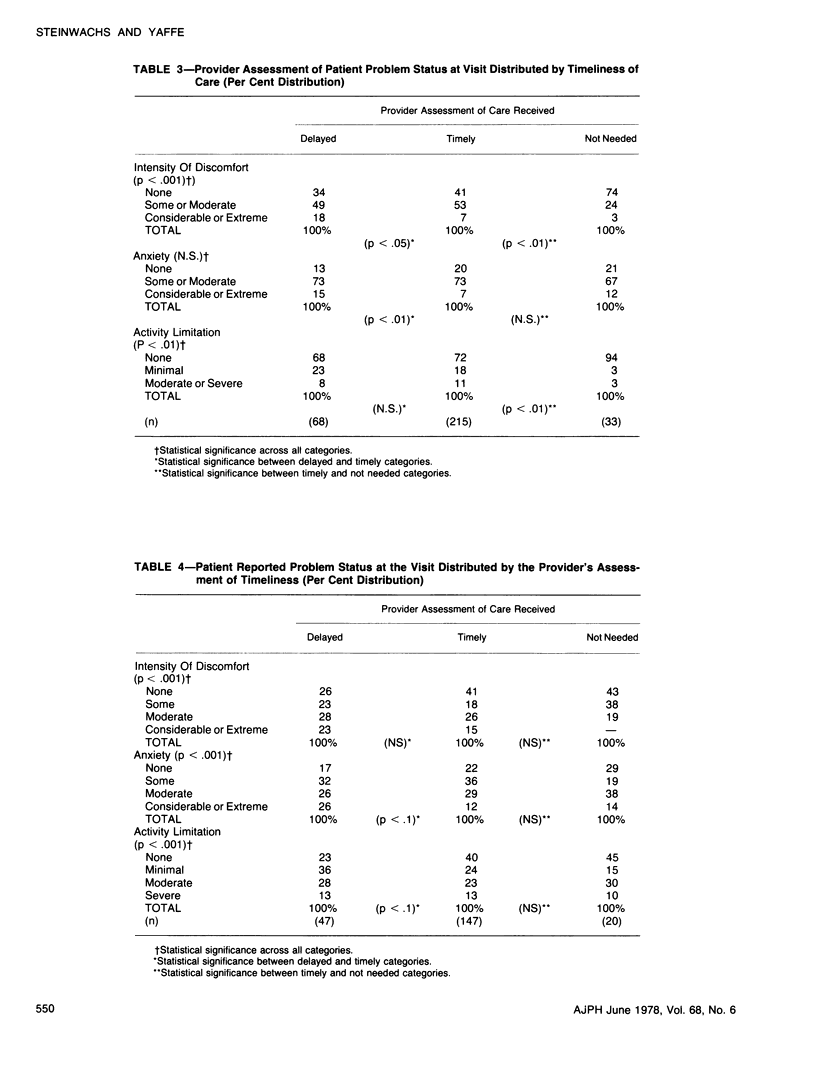
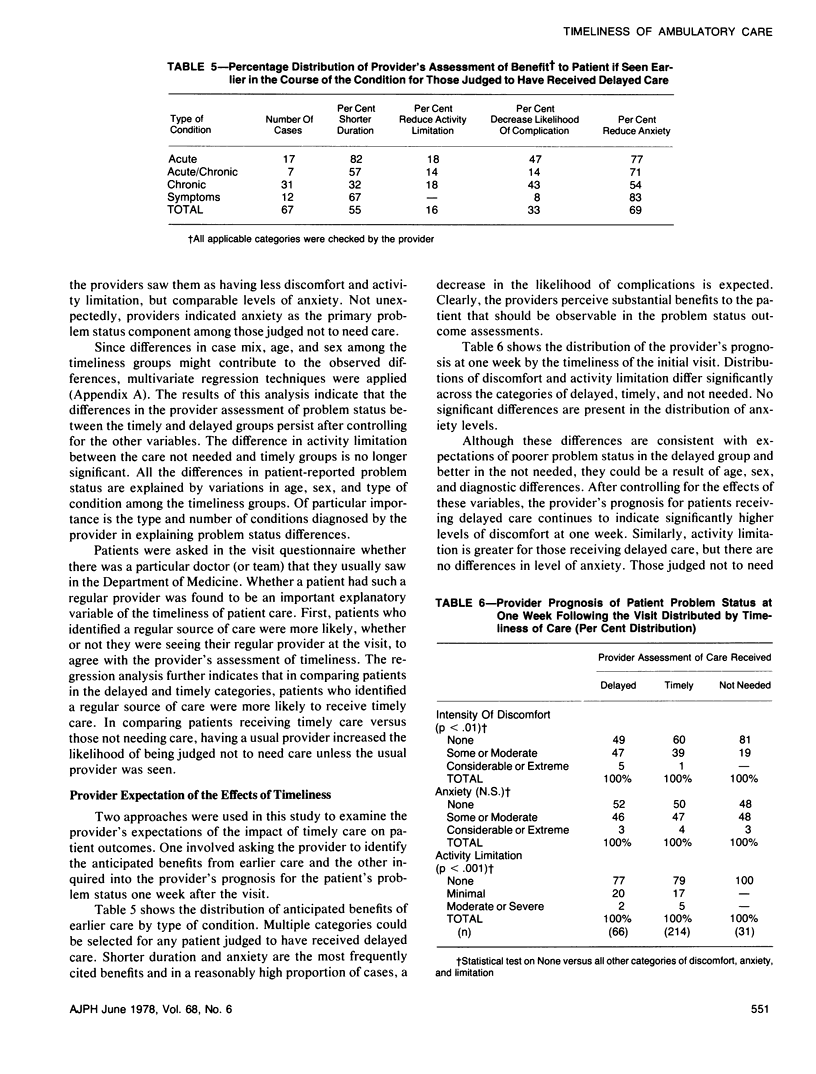
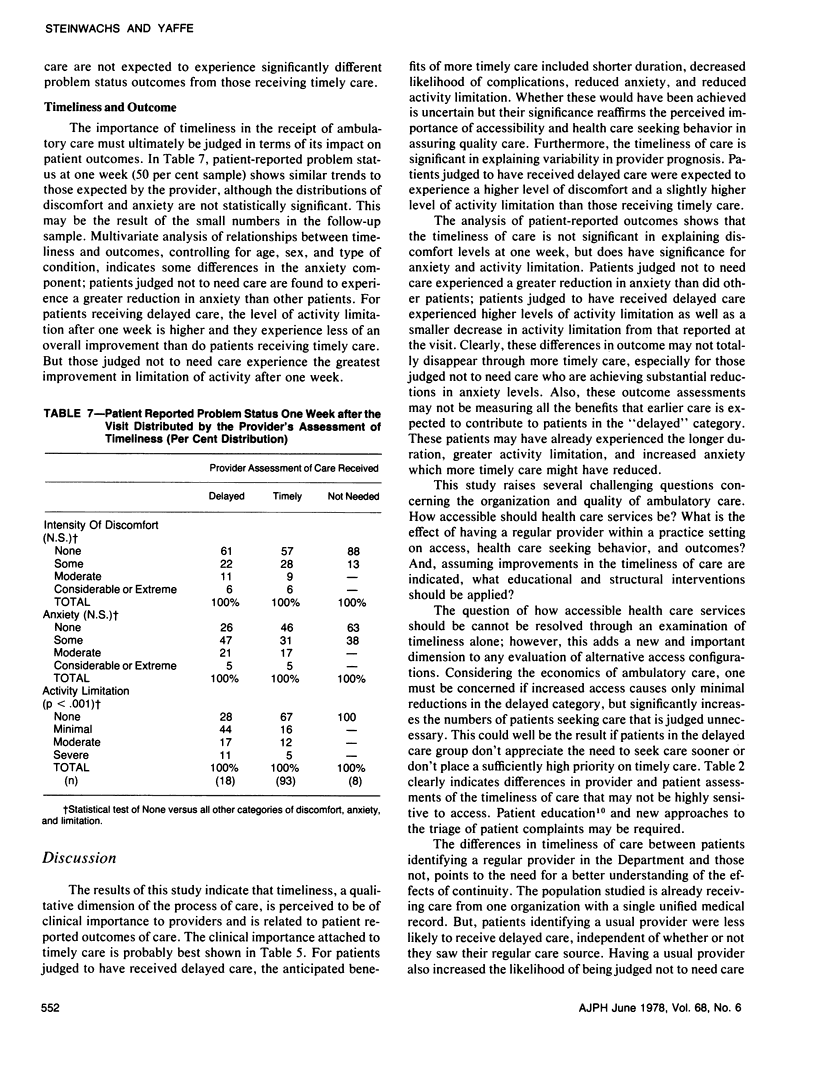
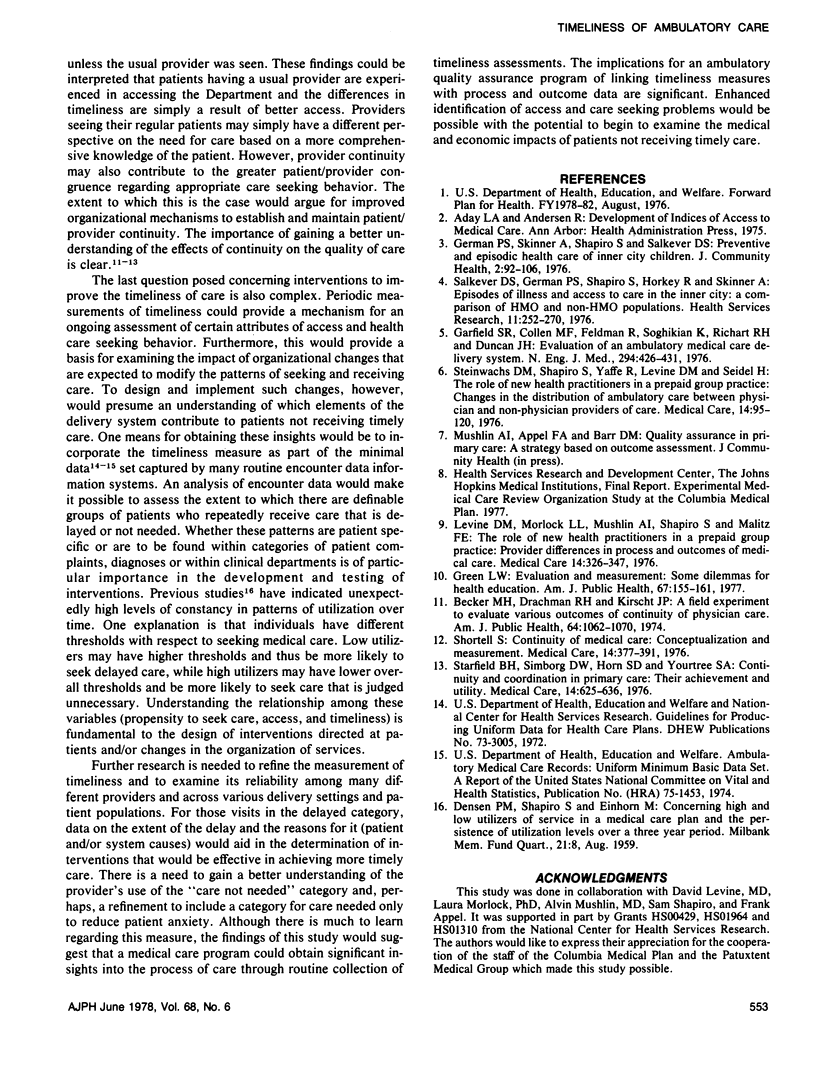
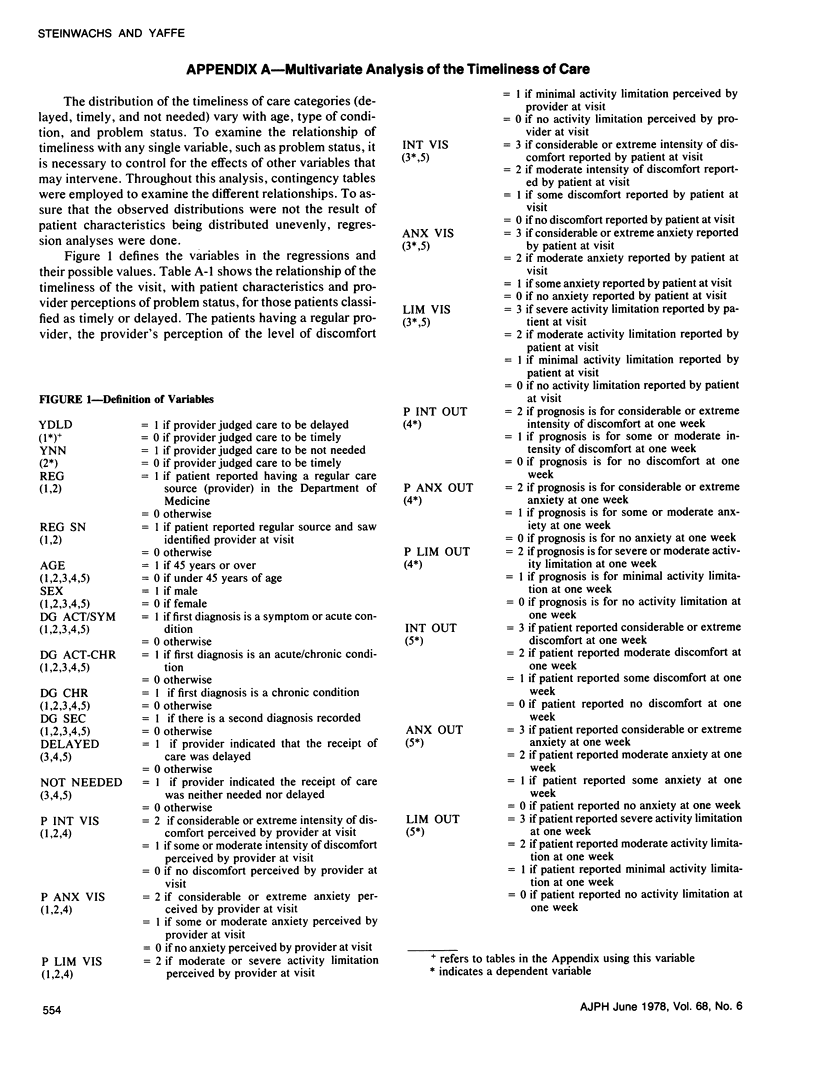
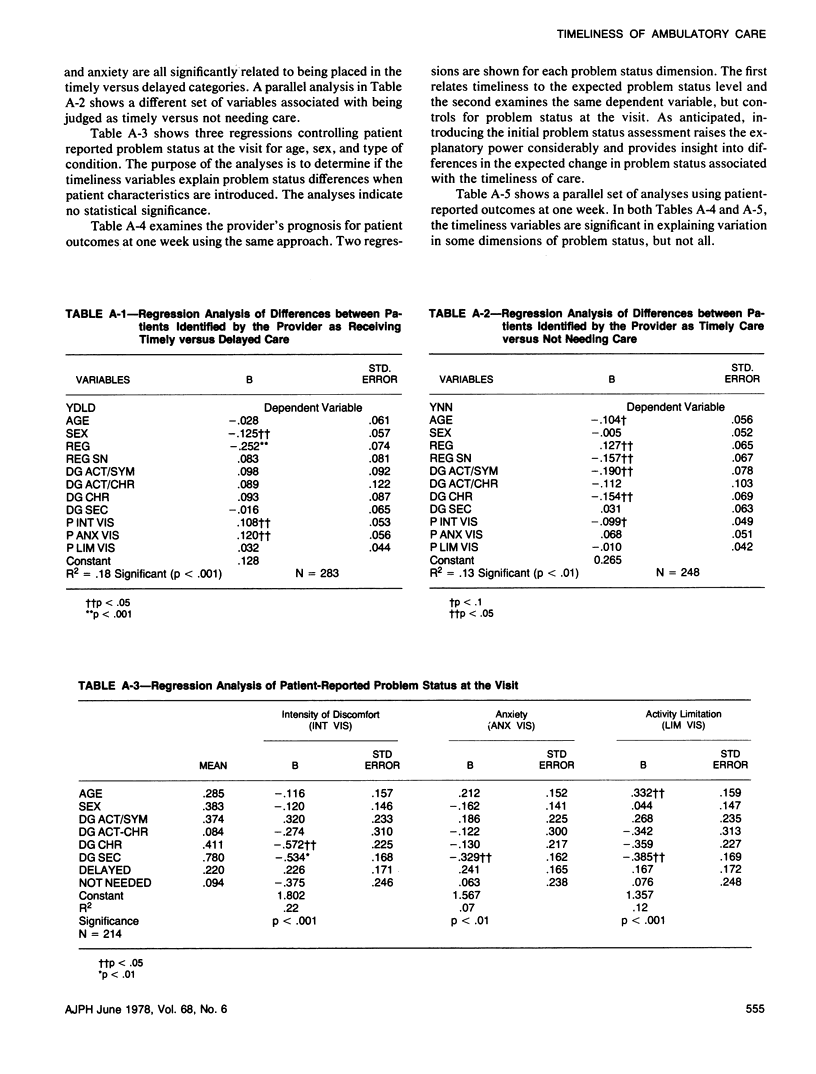
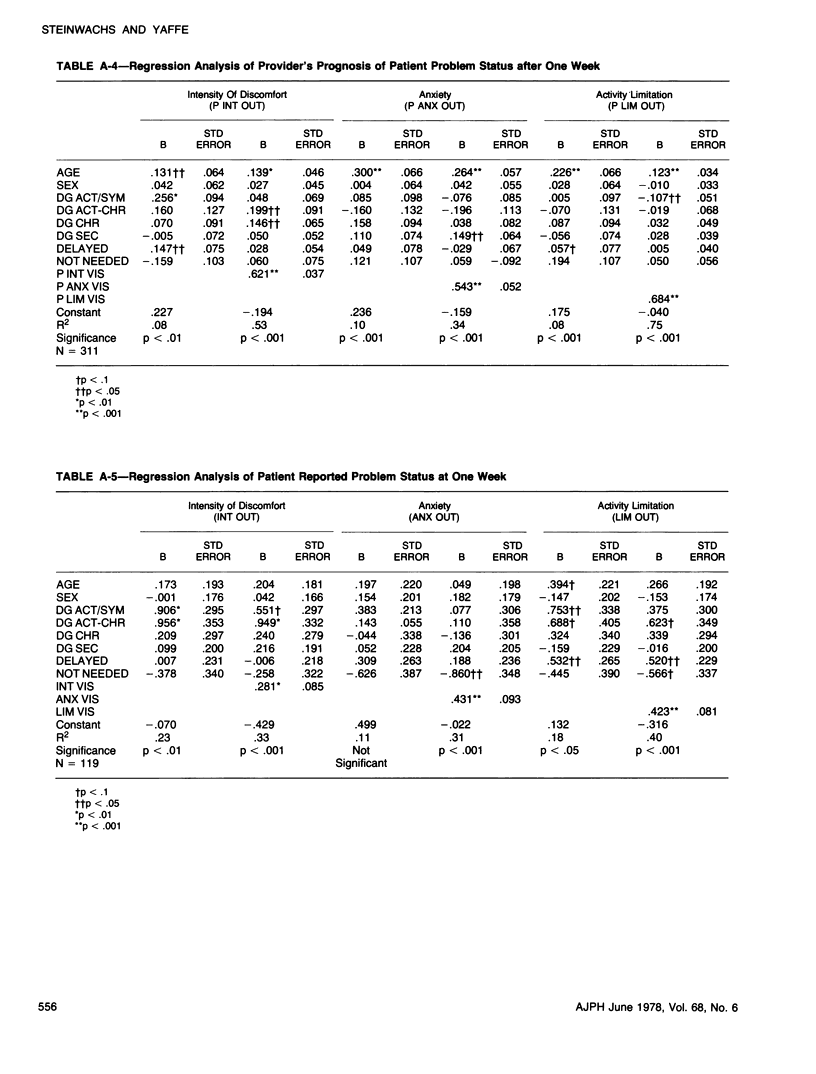
Selected References
These references are in PubMed. This may not be the complete list of references from this article.
- Becker M. H., Drachman R. H., Kirscht J. P. A field experiment to evaluate various outcomes of continuity of physician care. Am J Public Health. 1974 Nov;64(11):1062–1070. doi: 10.2105/ajph.64.11.1062. [DOI] [PMC free article] [PubMed] [Google Scholar]
- Garfield S. R., Collen M. F., Feldman R., Soghikian K., Richart R. H., Duncan J. H. Evaluation of an ambulatory medical-care delivery system. N Engl J Med. 1976 Feb 19;294(8):426–431. doi: 10.1056/NEJM197602192940806. [DOI] [PubMed] [Google Scholar]
- German P. S., Skinner E. A., Shapiro S., Salkever D. S. Preventive and episodic health care of inner-city children. J Community Health. 1976 Winter;2(2):92–106. doi: 10.1007/BF01319087. [DOI] [PubMed] [Google Scholar]
- Green L. W. Evaluation and measurement: some dilemmas for health education. Am J Public Health. 1977 Feb;67(2):155–161. doi: 10.2105/ajph.67.2.155. [DOI] [PMC free article] [PubMed] [Google Scholar]
- Levine D. M., Morlock L. L., Mushlin A. I., Shapiro S., Malitz F. E. The role of new health practitioners in a prepaid group practice: provider differences in process and outcomes of medical care. Med Care. 1976 Apr;14(4):326–347. doi: 10.1097/00005650-197604000-00004. [DOI] [PubMed] [Google Scholar]
- Salkever D. S., German P. S., Shapiro S., Horky R., Skinner E. A. Episodes of illness and access to care in the inner city: a comparison of HMO and non-HMO populations. Health Serv Res. 1976 Fall;11(3):252–270. [PMC free article] [PubMed] [Google Scholar]
- Shortell S. M. Continuity of medical care: conceptualization and measurement. Med Care. 1976 May;14(5):377–391. doi: 10.1097/00005650-197605000-00001. [DOI] [PubMed] [Google Scholar]
- Starfield B. H., Simborg D. W., Horn S. D., Yourtee S. A. Continuity and coordination in primary care: their achievement and utility. Med Care. 1976 Jul;14(7):625–636. doi: 10.1097/00005650-197607000-00008. [DOI] [PubMed] [Google Scholar]
- Steinwachs D. M., Shapiro S., Yaffe R., Levine D. M., Seidel H. The role of new health practitioners in a prepaid group practice: changes in the distribution of ambulatory care between physician and nonphysician providers of care. Med Care. 1976 Feb;14(2):95–120. doi: 10.1097/00005650-197602000-00001. [DOI] [PubMed] [Google Scholar]


